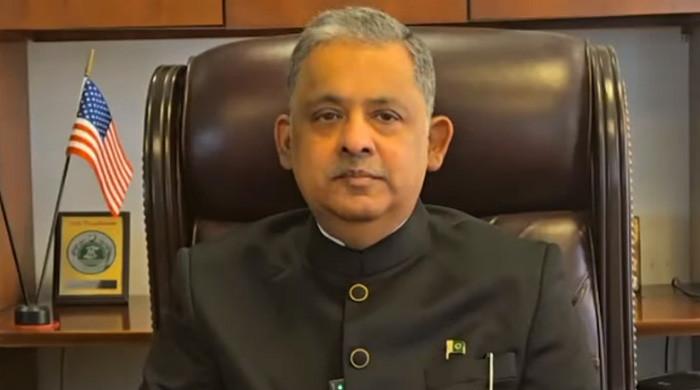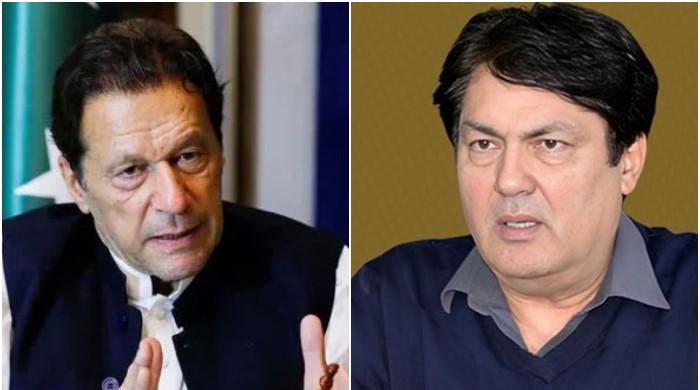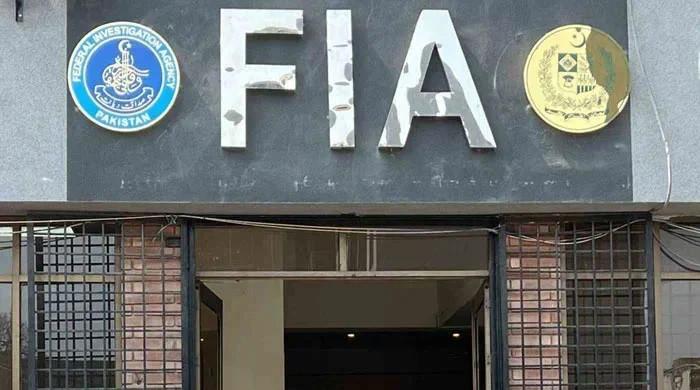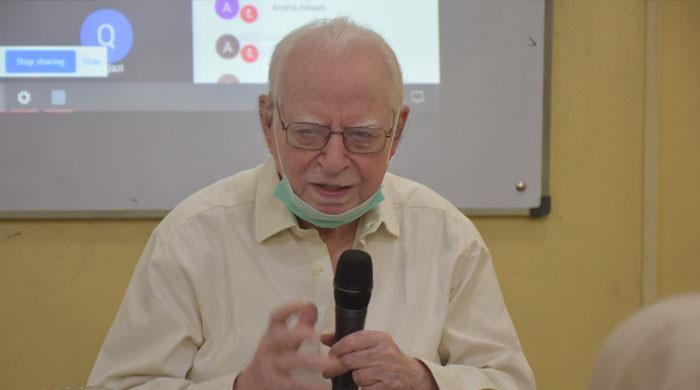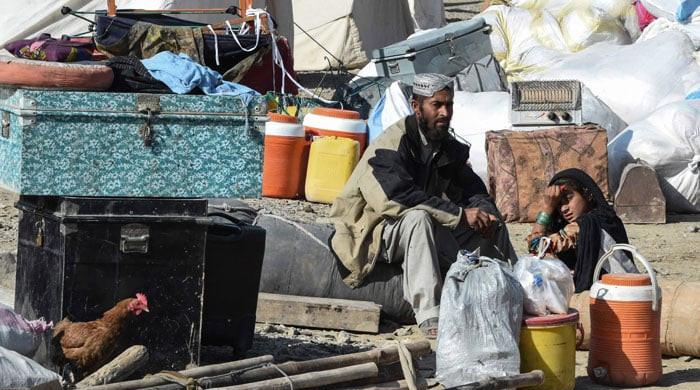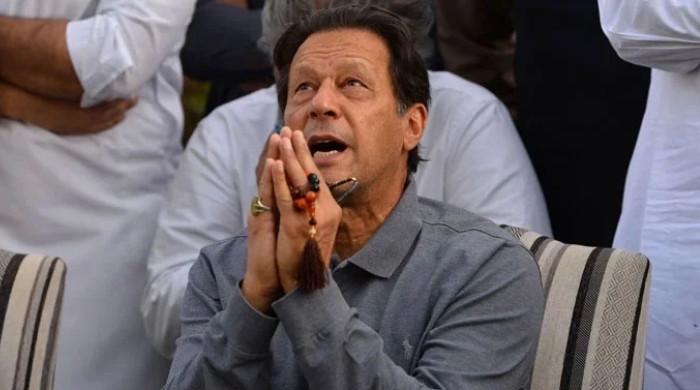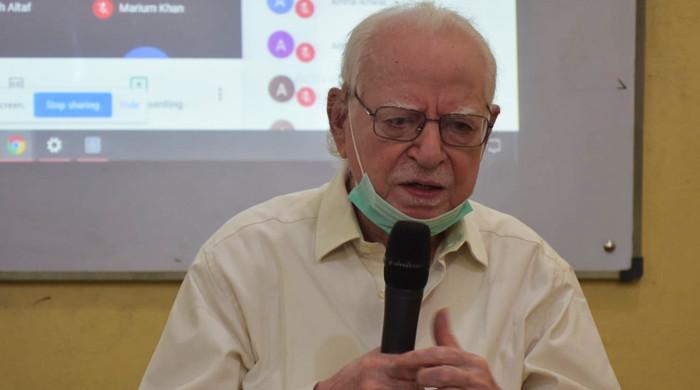Nawaz's illness provides impetus to Fazlur Rehman's long march call
Anger of PML-N loyalists has given Maulana Fazl's long march much-needed energy
October 25, 2019
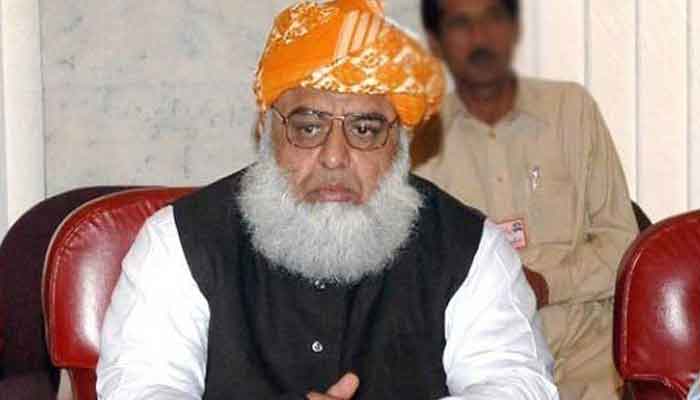
LAHORE. Under-trial former premier Nawaz Sharif's ailment has sent ripples in the incumbent Imran Khan-led regime, which is trying its best to calm the opposition that is fuming over what it calls a belated medical treatment. Interestingly, the anger of the PML-N loyalists -- especially in Lahore -- has given Maulana Fazlur Rehman's long march call a much-needed energy.
Now that the sitting government has allowed the opposition’s ‘Azadi March’ to proceed, if the organisers abide by the parameters set by the courts, it is expected to have thousands of participants. The march will not only include the 66-year old religious cleric Maulana Fazalur Rehman’s followers, but will also feature PML-N's charged up loyalists and Pakistan Peoples Party's fuming supporters, who also think their ailing leader Asif Zardari deserves better medical attention.
Also read Neither trenches nor containers can stop JUI-F: Fazl
According to media reports, the opposition parties have decided to launch a combined campaign to mobilise the masses.
After demanding premier Imran Khan in June to step down, or face a long march to Islamabad on October 27, the Jamiat-e-Ulema Islam (JUI-F) chief Maulana Fazl's long march is now expected to enter Islamabad on October 31. The cleric claims it will topple the regime that has assumed power after rigging the 2018 polls.
Meanwhile, PM Imran Khan has categorically said that he will not resign under pressure. In fact, he sees a conspiracy behind Maulana Fazl's protest and thinks the protest is driven by a 'certain agenda'.
The prime minister is of the view that the JUI-F’s plans to protest have sent a wave of joy in India, as it will divert attention from the Kashmiris fighting against the suppression of Indian premier Narendra Modi.
Whether the anti-government long marches have resulted in toppling incumbent Pakistani regimes or not. The opposition parties have continued to undertake such strenuous and hectic exercises with great zeal during the country’s chequered political history.
PML-N’s long march of 2009 achieved its primary purpose
Research conducted by the "Jang Group and Geo Television Network" shows in March 2009, Nawaz Sharif, had led a march against the-then Yousaf Raza Gillani regime from Lahore to Islamabad, but had called it off at Gujranwala.
Nawaz was marching for the restoration of 60 judges and Chief Justice Iftikhar Chaudhry, who were sacked by General Musharraf during the state of emergency in March 2007.
The PPP-led government had managed to survive what could easily have been a decisive protest initiated by its arch adversary.
Remember, on February 25, 2009, the Supreme Court had disqualified Nawaz Sharif and his brother Shehbaz Sharif from holding public office.
The-then president Asif Zardari had dismissed the provincial legislature and declared presidential rule in Punjab, with late Salman Taseer placed at the helm of affairs.
Lawyers and citizen groups, civil activists, and a coalition of political parties had then planned to take to the streets as a protest.
Although Nawaz was placed under house arrest on March 15 2009, the police on guard somehow 'mysteriously' disappeared hours later after an angry crowd gathered outside the PML-N leader’s Model Town Lahore residence.
Nawaz suddenly found himself free from chains and had instantly opted to lead a march towards Islamabad. But his journey was halted at night by 'some important telephone calls' from the capital just as he had reached Gujranwala.
The 'scripted yet bizarre mystery' was solved the next morning when in a televised speech on March 16 2009, Prime Minister Gilani promised to reinstate the chief justice. As a consequence Nawaz Sharif was forced to call off his widely-publicized long march.
Nawaz’s May 2012 long march threat against PPP ended in smoke
During the first week of May 2012, Nawaz had threatened the PPP government that he would undertake another long march.
It was also during May 2012 that the Pakistan Tehreek-e-Insaf chief Imran Khan had announced his intention to launch a parallel long march to overshadow a possible show of strength by PML-N.
Nawaz had upped the ante during his address at Taxila, at the first rally of his party’s campaign to oust the Yousaf Raza Gilani government. In his address he had told the public to be ready for a long march.
Nawaz had asked Gilani to step down primarily because he had not only been convicted for contempt by the Supreme Court, but also because of the-then PPP government's poor record in office.
On the other hand, the PPP had announced it would hold a large public meeting at the Sindh-Punjab border on May 12 of the same year.
The decision was taken by PPP’s Sindh Council as a tit-for-tat response to the long march threat of the PML-N chief.
We do not know why and how this long march call had ended in smoke. However, in December 2012, the-then Punjab Chief Minister, Shehbaz Sharif, had accused Asif Ali Zardari of robbing the nation of billions of rupees. He had added that he would retrieve the looted wealth from the sitting president.
On August 23, 2013, Asif Zardari had hosted a dinner at the Presidency for the newly-elected prime minister Nawaz Sharif.
And on September 5, 2013, a farewell luncheon by the-then prime minister Nawaz Sharif had honoured the outgoing president. Both leaders had showered praises on each other during the function.
Benazir Bhutto’s successful and unsuccessful long marches
While Benazir Bhutto’s first long march in November 1992 had failed to achieve the desired purpose, her second attempt of July 16, 1993 had reaped rewards, as both Nawaz Sharif and the then president Ghulam Ishaq Khan were shown the door by Army Chief General Waheed Kakar.
This was Nawaz Sharif’s first stint in power. The Opposition had dubbed the 1990 elections as 'rigged' and had demanded Nawaz's resignation.
The November 1992 long march had witnessed the participation of various key political leaders including Nawabzada Nasrullah Khan, Muhammad Khan Junejo, Ghulam Mustafa Jatoi, Qazi Hussain Ahmad, Gauhar Ayub Khan, Mian Manzoor Ahmad Wattoo, Hamid Nasir Chattha and others.
It was during this particular long march that PPP’s late Khalid Javed Ghurki and late Salman Taseer, were reportedly tortured at the behest of the Sharifs. While the likes of Aitzaz Ahsan, Jahengir Badar and Ghulam Mustafa Khar were subjected to a relatively 'lenient and friendly' treatment behind bars.
It should also be recalled that on April 18, 1993, President Ghulam Ishaq Khan had dismissed the government of Nawaz Sharif on charges of corruption and also dissolved the National Assembly. Although new elections were scheduled for July 1993 under the caretaker regime Balakh Sher Mazari, Chief Justice Nasim Hassan Shah ruled that the president’s actions were unconstitutional and promptly restored Nawaz on May 26, 1993.
Following several weeks of political turmoil and a threat by former PPP chairperson Benazir Bhutto to march on Islamabad with hundreds of thousands of supporters, former army chief General (retd) Abdul Waheed Kakar had then 'convinced' the sitting president and prime minister to resign on July 18, 1993. The National Assembly was also dissolved and Moeen Qureshi was sworn in as the caretaker prime minister, while general elections were scheduled for October 6, 1993.
Benazir and her party consequently won the October 6 1993 polls by a narrow margin. While the PPP had emerged triumphant in 86 out of the 217 National Assembly seats, PML-N managed to win in 72 constituencies. Benazir’s party could not win the 109 seat majority required for automatic selection as the country’s premier, resulting in a confidence vote on October 19 1993. However, she still managed to get elected as the prime minister (121 to 72 votes) to head a minority government.
Benazir tasted her own medicine in 1996
On July 20, 1996, the-then Jamaat-e-Islami (JI) chief, Qazi Hussain Ahmad, had announced to start protests against the-then ruling Benazir Bhutto government.
Hussain had resigned from the Senate on September 27 of the same year and had announced to start a long march against what he dubbed a 'corrupt PPP regime'.
Annals of history shed light on how protests were staged on October 27, 1996 by JI and the allied opposition parties.
And on November 4, 1996, Benazir Bhutto's government was dismissed by former president Farooq Leghari, primarily because of corruption.
Unsuccessful long march calls by Tahirul Qadri and Imran Khan
Pakistan Awami Tehreek (PAT) Chairman, Dr Tahirul Qadri, had staged his first long march against the-then PPP regime in January 2013.
On January 17 of the same year, the PPP government came for negotiations and struck an agreement which was termed the Islamabad Long March Declaration, that ended the protest.
The Islamabad Long March Declaration was signed by former prime minister Raja Parvez Ashraf following the appointment of a 10-member committee to negotiate with Qadri. The PAT Chairman had accepted the agreement after he issued a second ultimatum from his bullet-proof mobile quarters.
The FIA had also closed inquiries into Qadri and his party's funding for organising the march.
As far as brief chronology of this march is concerned, shortly after returning from a self-imposed exile in Canada, Qadri had given a speech on December 23, 2012, in which he had denounced the rampant corruption at all levels of the PPP-led government. The speech had galvanized demonstrators who were already frustrated with former president Asif Zardari's inability to reduce militancy and improve the economy.
The initial goal of the march was to request electoral reforms, such as barring corrupt incumbents from standing for elections and to bring forward the date for the general election due in 2013.
Upon reaching Islamabad the goal of the march evolved to call for the dissolution of the parliament by January 15, 2013. It also demanded that removal of Asif Ali Zardari by staging a sit-in in front of parliament (a deadline that was overlooked).
Qadri also called for the dissolution of the provincial assemblies and the disbanding of the Election Commission of Pakistan.
In August 2014, an eventful Lahore to Islamabad long march (Azadi March) was organised by incumbent premier Imran Khan and his political cousin, Dr Tahirul Qadri against the Nawaz regime, which had come to power as a result of polls in May 2013.
While Imran was protesting over claims of systematic rigging during the 2013 ballot exercise in the country. On the other hand, participants of Qadri's famous 'Inqilab (Revolution) March' were demanding an FIR against the killers of the June 14, 2014 Model Town Lahore massacre, where Punjab Police had allegedly killed at least 14 workers, including two pregnant women, who were affiliated with PAT.
On August 29 of the same year, former army chief General (retd) Raheel Shareef, had met both Imran Khan and Tahirul Qadri. This meeting with the former army chief had made Imran famously say: "The referee had raised his finger."
Nawaz was visibly on the back foot and was struggling to survive. The PPP leadership then came forward and advised Nawaz to convene a joint session of the Parliament. As a result, the upper and lower houses of the Parliament met on September 2, 2014.
PTI’s rebellious former leader Javed Hashmi, had resigned from Parliament during this joint session.
While Qadri had pulled out of march on October 21 of the same year after two months and one week, his ally Imran Khan had gone on to stage a 126-day long sit-in on the capital's streets, but he did not succeed in ousting the Nawaz regime.




